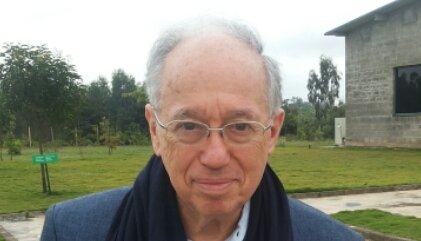|
I was delighted to be invited by my dear friend Norman Bodek (popularly known as the 'Father of Lean' in the US) to be with him when he was teaching the Harada method (the best in class method for personal development that has come out of Japan) to one of his clients in India. Norman uses a lot of personal anecdotes to illustrate the steps recommended by Harada. Since Norman has been a long termsaadhaka many of these anecdotes were about his Yoga practice and what he learnt from his guru. Paul Ackers, who calls himself a ‘Lean Fanatic’, was also there, the day was an eye opener in many ways.
On the commute to the program site Norman and back talked about how the Bhagavad Gita was central to him. We found a lot of convergence between his insights and Yogacharya Krishnamacharya's teachings. One of the central ideas in the Gita is ‘kartavvyam’. This word is often translated as ‘duty’, but Krishnamacharya's explanation is very close to Harada's central idea: 1. Can you be your best and bring it to bear on the situation? 2. Can you take full responsibility for yourself? There are four levels of choice that people make according to Krishnamacharya, if we apply them to the way one brings oneself to ones job performance it will make sense in an organizational context. This choice of how much of oneself one invests in the situation/ system is the 'role' one plays not the designated job position. To illustrate, Krishna's job position is a charioteer, but the roles he plays are of a friend and a powerful influencer. The four levels of investment of the self in the situation are:
When a person acts from this inner choice, the person creates a 'dharma bhoomi'. If one contrasts the way the Kaurava army was put together, the idea of duty and how this idea can be used to manipulate and oppress a person will become clear. All the people who joined the Kaurava army were compelled to do so because of quid-pro-quo, familial compulsions or the promise of personal gain. The Paandava army comprised of people who acted from a commitment todharma. This is ‘kartavvyam’, and this type of choice making creates a 'karma bhoomi, and a dharma bhoomi'. Heroic role play reflects a commitment to be ones best and ensure that this 'best that one can be' serves society. This is the central piece of the Harada method too.
0 Comments
Leave a Reply. |
Raghu's BlogMy work revolves around helping individuals, groups and organizations discover their Dhamma, and become “the best they can be”. This aligns with my own personal saadhana. I have restated this question for my self as follows: “how can I be in touch with the well spring of my love for the world and my love for my self simultaneously” Archives
October 2017
Categories |

 RSS Feed
RSS Feed
